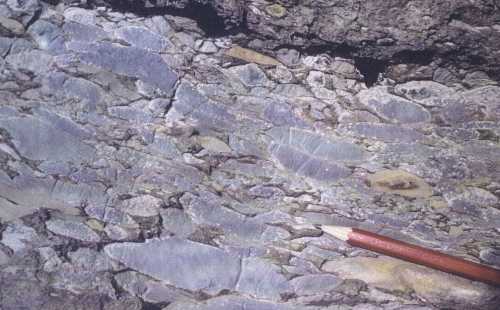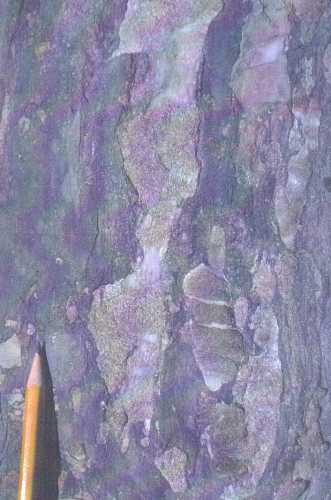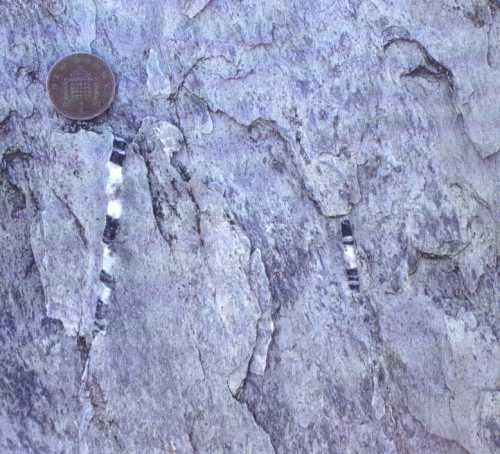Morcles nappe - lower limb
The lower limb of the Morcles nappe is more strongly deformed than the upper limb.
This can be recognised from the shapes of clasts in Tertiary conglomerates which
now lie along the base of the nappe. Additional indications of strong deformation
come from pulled out fossils (e.g. belemnites). Can you relate these distortions to
the overall shape of the nappe and the changes in bed-thickness around the large structure
on the cross-section?
Scroll down this page
to see examples.
Conglomerates
Two photographs are provided which show distortion of conglomerates. You can
combine these views to assess the shape of the clasts in three dimensions.
Additionally, measurements of structural data can be made and used to infer aspects of the
formation of the main nappe structure.
 |
| Tertiary conglomerates (the clasts are chiefly of limestone) seen in
profile across the bedding. This face is sub-vertical and oriented roughly NW-SE. |
 |
| Tertiary conglomerates - seen by looking down on the bedding plane. The
bedding plane is oriented 309 - 34N with the pencil pointing towards 130. In which
direction are the conglomerate clasts stretched? |
Belemnites
In the lower limb, belemnite fossils are commonly found in Jurassic sediments,
stretched out like this. This stretching may be compared with that found in the
conglomerates.
 |
| Belemnites in Jurassic rocks from the lower limb of the Morcles nappe.
Notice the fine-scale linear feature on the surface of the outcrop. This is defined by
aligned and sttretched out grains (which run in a NW-SE direction) |



